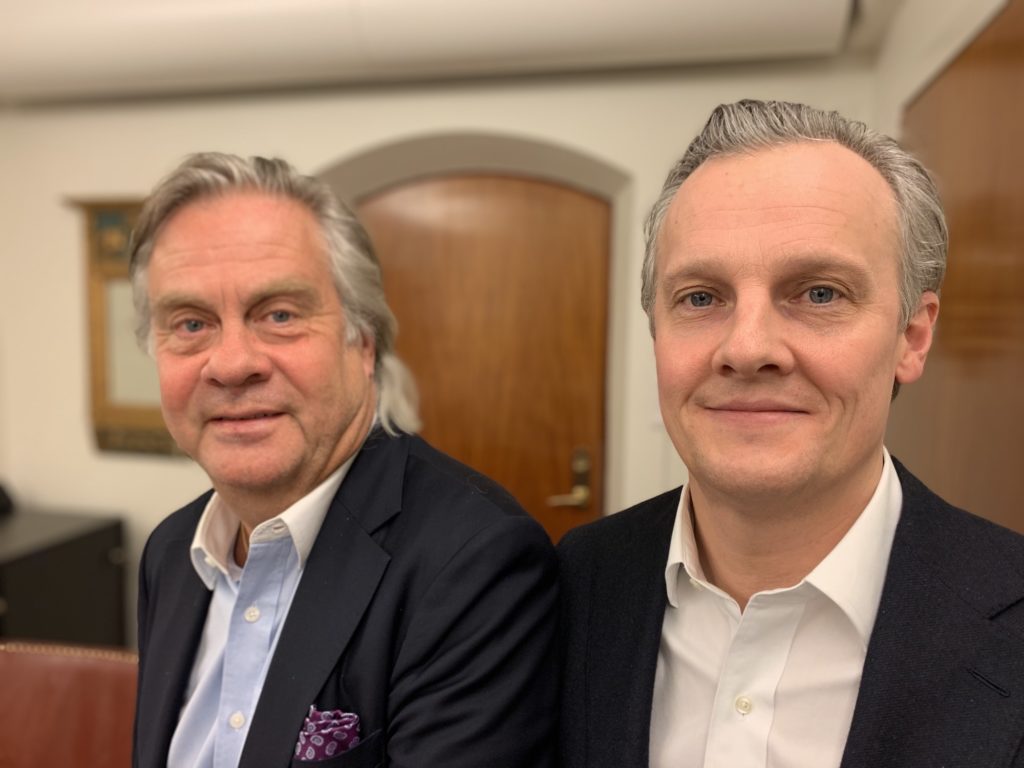LONG READ: Eight years after the “go” in 2012, Sweden’s SEB finally dares calling it a success: the huge integration project with custody outsourcing partner Brown Brothers Harriman. Now many new mandates are won.
Interviewed by PostTrade 360, SEB’s Niklas Nyberg and Göran Fors tell the story. Of a rocky path, starting way back.
The project name was “P6”, and there was a reason for it. This was the sixth time that SEB launched a reassessment of its global custody strategy. The focus was on institutional clients such as insurance companies, pension funds and fund companies. The previous five attempts had all left an itch.
With some 4 ,500 billion SEK in assets under custody (AuC) in its global custody business, SEB is a large player by Nordic measures. Adding its sub-custody assets, held for overseas investors, gives a total AuC above 10 ,000 billion SEK today.
But let us rewind. As SEB’s global custody business emerged, on the back of Sweden’s currency-exchange deregulation in the late 1980’s, the global competitors had already had many years to establish their positions.
”Ever since the 1990’s, SEB had been in agony about the size of the investment that would be needed to catch up operationally with the big global custodians. Because on the other hand we felt that we just couldn’t let our key clients down,” tells Niklas Nyberg.
It was unthinkable for the owners to see their bank unable to discuss securities handling in detail with its corporate and institutional clients. This is part of our DNA.
Today head of institutional global custody, Niklas Nyberg can look back at a 22-year career in SEB’s custody business which coincides in time with the relentless reconsideration of its existential dilemma. So can Göran Fors, currently deputy head of Investor Services, who came in at SEB around the same time in the mid-1990’s. Plans existed, already then, to outsource some operational tasks to OM (the precursor of Nasdaq’s tech division in Stockholm), but did not materialise. We meet at SEB’s history-laden head office at Stockholm’s Kungsträdgården, and Göran leaves it to Niklas to draw the interior.
“We kept putting make-up on the pig, so to speak – improving what we could – but by the early 00’s many of the larger institutions had let go of us. We risked being perceived as the provider of an over-priced but under-performing product – which could hit back on the image of our services and brand generally,” says Niklas Nyberg.
As a part of the Wallenberg sphere since the 1800’s, SEB served as a catalyst for Sweden’s global industrial impact over the next century. Today, this reflects in a leading position as house bank to a large share of the Nordic region’s large corporates and institutions. (The institutional investor part in the segment is growing and now makes up nearly half of SEB’s LC&FI business.) So SEB is a regional giant in the segment. But a giant which, on the scale-economy-driven market for global custody services, is battling with international giants a hundred times its size.
Around 2010–2011 the indecision had finally transformed into determination to do something. But what? Four high-level alternatives were sketched:
• build a state-of-the-art platform at the bank itself,
• outsource operation to a partner that already has one,
• keep on using the existing infrastructure, mitigating the drawbacks, or
• sell the global custody activity while doing the best to still keep the trading business – a strategic path with similarities to those later chosen by other large actors like Deutsche Bank, Barclays and Nordea.

“We quickly identified that our owners did not want to sell,” says Niklas Nyberg.
”It was unthinkable for them to see their bank unable to discuss securities handling in detail with its corporate and institutional clients. This is part of our DNA. Additionally, it would cause a major income drop over-night, and the buyer would probably be a competitor to SEB also in other areas.”
The mitigating path, too, was soon excluded. Virtually having done it for more than a decade had made things worse, not better.
So build or outsource? The two remaining alternatives were considered near equal both in terms of capability and investment cost. But building a new in-house platform would bring some drawbacks: Competitors would not stop improving their systems and products, so the imperative for more investments would stay forever. And then the build-up project would be so big, not even all the knowledgeable consultants in the Nordics would have been many enough to staff it.
The outsourcing would be for the technical platform provision – not leading to handover of any client relations as such from SEB. US custody bank Brown Brothers Harriman, BBH, was soon spotted as the particularly suitable strategic fit. It was a reasonably close match in size, rather than a giant, and had decided on a strategy to invest in its platform to provide just this type of capability for other custodians. BBH had long been SEB’s sub-custodian in the United States so there were good personal relations too.
So was there any early-exit possibility, or just all or nothing?
“That is a very good question,” Niklas Nyberg answers.
“In fact it is a question we spent about half a year evaluating.”
However, according to Niklas Nyberg, the integration for SEB was a much more complex venture than anything BBH had previously done in this area. At the peak, the project was keeping 350 people busy – 200 on SEB’s side and another 150 at BBH.
“In hindsight we can observe that they were not mature for an outsourcing project at this level. They, too, have had a lot of learning to do,” says Niklas Nyberg.
Several hundred million SEK had been budgeted on SEB’s side, but complexity emerged along the way. In 2015 it was clear that the allocated resources would not be enough.
So was there any early-exit possibility, or just all or nothing?
“That is a very good question,” Niklas Nyberg answers. “In fact it is a question we spent about half a year evaluating.”
By this time the team was under heavy stress.
“There were hot discussions. We had invested a lot of money – but still had costs ahead. Many of our people had worked very hard for a long time. And then nobody could give answers, nobody had done this before us. We could only trust our gut feeling.”
An exit scenario, limiting the implementation to Luxembourg-based assets, was pitched against the full scope. But the bank’s top management kept trusting its custody people, and stayed committed to sponsoring the job until it was done. Around late 2015 the decision was made to prioritise the Swedish market with its key clients, and to go the full stretch.
“That turned out to be a very, very good decision”, says Niklas Nyberg, evidently relieved.
By the time the first client went live on the new platform in October 2016, Niklas Nyberg knew his team was past the turning point.
“The first year we did put effort into the sales but also into ensuring the functionality. It is since 2018 that we have been public and confident in our sales activities – with success. So in the last two years, we have been seeing our dreams materialise.”
“Overall, one would be wise not to think of this type of project as a cost-saving exercise.”
He claims his business now enjoys a “hit-rate” around a remarkable 50 percent when bidding for new mandates, and despite a more than doubled total project cost he describes the overall outcome as “quite spot-on in relation to our 2012 business case”. One result clearly exceeds expectations: the ”straight-through processing rate” – that is, the proportion of transactions that are completed without need for manual intervention. This is up from below 70 percent to above 98 percent, meaning that less than 2 percent of transactions now require a human touch.
So the per-transaction cost must be down remarkably?
To this question Göran Fors cannot resist entering the discussion. “Overall, one would be wise not to think of this type of project as a cost-saving exercise,” he cautions.
Göran Fors lists the overall success factors as he sees them in hindsight:
• going with a long-term partner,
• stable teams on both sides, with members staying throughout the project,
• commitment and trust from top-management, and
• being determined not to take any easy way out but to pursue what would be the best solution in a long perspective.
Since the project started, new challenges have risen.
“Regulatory requirements have increased, both locally and internationally, so we now have employees whose main task is to monitor the outsourcing,” says Göran Fors.
The final touch is still to be added. 20 percent of the assets under the LC&FI business in Sweden still remain to be moved from the old platform. This old platform, in turn, will be staying in use for the retail business, which will then be able to adapt it more closely to its own needs in the future.
Then, in Luxembourg, the first clients will be onboarded with the BBH solution later this year.
“That will mean that our infrastructural tech-journey has reached its destination,” Niklas Nyberg concludes.
“That will feel like a milestone.”












